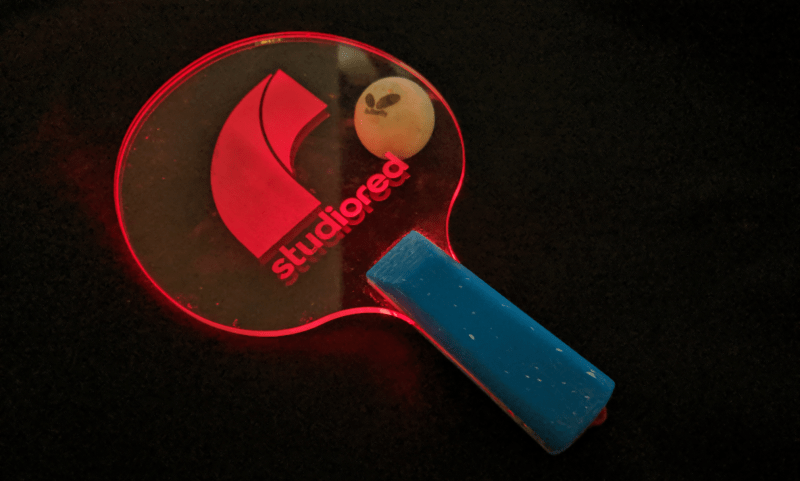[George] and his coworkers like to blow off a little lunchtime steam on the company ping pong table. We might do the same, except it’d just be us versus the wall, and most of the exercise would consist of bending over to pick the ball up off the floor. When he found a scrap piece of acrylic out in their shop, [George] got the bright idea to make an edge-lit paddle featuring the company’s logo.
Not only does the paddle look cool, it works pretty well, too, even though it’s heavier and has smooth surfaces compared to a standard paddle. To begin, [George] found a regulation-size paddle outline and imported it into SolidWorks, then designed all the necessary cuts for the LEDs and other electronics. He also designed and printed ergonomic grips to protect the goods.
Continuing the stuff-on-hand theme, [George] used through-hole LEDs and dug into the abundance of battery clips and springs they have lying around for designing prototypes, instead of making it all fancy with SMT LEDs and a rechargeable battery pack. Slip on those sweatbands, because we’re serving up the build video after the break.
We see more ping pong balls than paddles around here, and that’s probably because they make great LED diffusers.
















I’m glad you explained WHY you saw more ping pong balls around here…,,
Very Nice! excellent tutorial and design work.
Could you please share what type of laser cutter you used. I notice it is different than most of the CO2 lasers that have a fixed laser in the rear and then mirrors that direct the beam.
thanks
dm
It looks like a bog-standard K40 to me (and I own one).
tke it to the next level… Change the LED to RGB and add a sensing element to make the paddle glow white when it strikes the ball (then decay to the red background color)
This! I’m thinking a small piezo transducer cemented to the PMMA under the handle, with a couple of op-amps – one amp and one comparator – connected to an interrupt input, should do it.
This looks like a well executed build and a nice looking paddle.
But without a proper rubber(?) surface this will play poorly compared to commercial ping-pong paddles
I’m thinking a laser-cut stencil and some clear silicone could improve the play characteristics without detracting from the aesthetics too much… and might even enhance them if done correctly!